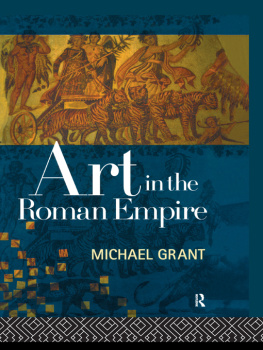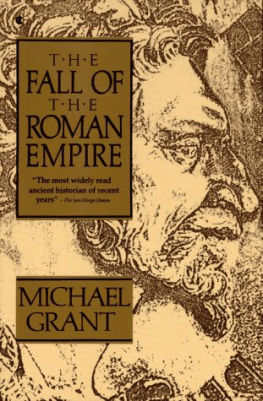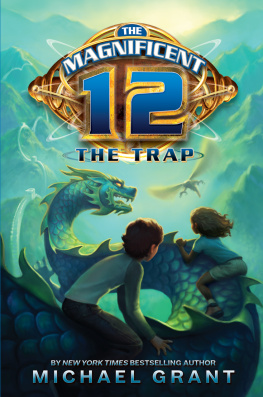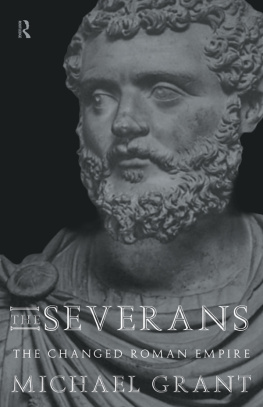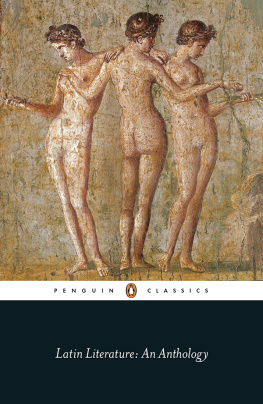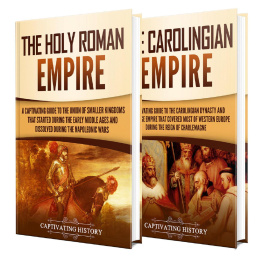ART IN THE ROMAN EMPIRE
ART IN THE ROMAN
EMPIRE
Michael Grant
First published 199j
by Routledge
2 Park Square, Milton Park, Abingdon, Oxon, OX14 4RN
Simultaneously published in the USA and Canada
by Routledge
711 Third Avenue, New York, NY 10017, USA
1994 Michael Grant Publications Limited
All rights reserved. No part of this book may be reprinted or
reproduced or utilized in any form or by any electronic,
mechanical, or other means, now known or hereafter
invented, including photocopying and recording, or in any
information storage or retrieval system, without permission in
writing from the publishers.
British Library Cataloguing in Publication Data
A catalogue record for this book is available from the British Library
Library of Congress Cataloguing in Publication Data
A catalogue record for this book has been requested
ISBN 978-0-415-12031-9
LIST OF ILLUSTRATIONS
ACKNOWLEDGEMENTS
I am very grateful to the following who have helped me with this book: Emma K. Baxter of the Cambridge University Press, Messrs Blackwells, Dr Andrew Burnett, Keeper of Coins and Medals at the British Museum, Sarah C. Butler, Messrs David & Charles, Maria Ellis, W. E. Metcalf, Valeria Scott of the British School at Rome, Professor Andrew Wallace-Hadrill ( Journal of Roman Studies ), Richard Stoneman, Sarah-Jane Woolley and Victoria Peters of Routledge, and my wife.
As regards the illustrations, I much appreciate the assistance and permissions I have received from the Alaoui Museum, Tunis, the Bibliothque Nationale, Paris (M. Amandry), the British Museum (Photographic Service), Messrs Cassell, the Detroit Institute of Arts (William H. Peck), the German Archaeological Institute at Rome (Helmut Jung), the Museo Archeologico Nazionale (Naples), the Palestine Exploration Fund (T. C. Mitchell), Penguin Books, the Rheinisches Landesmuseum, Trier, the San Antonio Museum of Art (Gerry D. Scott III), Richard Stoneman, the University of North Carolina Press (Kathy Shear), Thames & Hudson International (Hans Coudenhove), the Vatican Museums (Paolo Liverani), the Yale University Press (Robert Baldock).
I also owe an acknowledgement to the following for allowing me to include quotations: Abbeville Press, for A. L. Croutier, Taking the Waters (New York: 1992); American Numismatic Society, for J. M. C. Toynbee, Roman Medallions (amended reprint, ed. W. E. Metcalf, New York: 1986); B. T. Batsford Ltd, for C. H. V. Sutherland, Art in Coinage (London: 1955) (Bobby Cox); George Braziller Inc., for F. E. Brown, Roman Architecture (New York: 1961) (C. J. Keyes); Cambridge University Press, for my From Imperium to Auctoritas (Cambridge/London: 1946) and Roman History from Coins (Cambridge/London: 1958) (Linda Nicol); David Higham Associates, for R. Fedden, Syria (London: Robert Hale, 1946); Journal of Roman Studies , for Palmyra under the aegis of the Romans, by I. A. Richmond (1963); W. W. Norton, for G. M. A. Hanfmann, Roman Art (New York: 1975); Orion Publishing Group, for my World of Rome (London: 1960), The Climax of Rome (London: 1968), Cities of Vesuvius (London: 1971), Herod the Great (London: 1971), The Visible Past (London: 1990), The Emperor Constantine (London: 1993); the Palestine Exploration Fund, for S. Gibson and J. Taylor, Beneath the Church of the Holy Sepulchre, Jerusalem (London: 1994); Penguin Books, for R. Krautheimer, Etruscan and Roman Architecture (Pelican History of Art) (Harmondsworth, Mx: 1981 [1970]); Laurence Pollinger Ltd, for R. Fedden, Syria (London: Robert Hale, 1946); Society for the Promotion of Roman Studies, for Palmyra under the aegis of the Romans, by I. A. Richmond, in Journal of Roman Studies LIII (1963) (Dr Helen Cockle); Richard Stoneman, Palmyra and its Empire (Ann Arbor, MI: University of Michigan Press, 1992); Thames & Hudson International, for P. Fischer, Mosaic: History and Technique (London: 1971), A. Menen and R. Wood, Cities in the Sand (London: 1972) and S. Rozenberg, Enchanted Landscapes: Wall Paintings from the Roman Era (London: 1994); Times Literary Supplement (Alan Jenkins, Andrew Weir); University of Chicago Press (Jim Willis); University of North Carolina Press, for P. MacKendrick, The Dacian Stones Speak (Chapel Hill, NC: 1975) (K. Shaer); Professor Cornelius C. Vermeule III of the Museum of Fine Arts, Boston; Roger Wood.
INTRODUCTION
By the time that Augustus founded the Roman principate, after he had defeated Antony and Cleopatra at Actium in 31 BC and pursued them to their deaths in Egypt in the following year, the empire was already large, including Spain, Gaul, Africa (Tunisia), Greece, Asia (western Asia Minor), Pontus (northern Asia Minor) and Syria, to which Egypt was now added. So, later in the reign, were Galatia (25 BC ) and Judaea ( AD 6), and in the north Augustus advanced the frontier to the Danube and created a chain of provinces (Raetia, Noricum, Pannonia, Moesia) which protected the Balkans from invasion. But his plan to make the River Albis (Elbe) instead of the River Rhenus (Rhine) the imperial boundary was abandoned after the defeat of Varus (AD 9), and the Rhine-Danube formed the northern frontier, as the Euphrates constituted the frontier in the east. Across the rivers, however, as elsewhere on the imperial borders, there were client princedoms dependent on Rome.
Tiberius, the successor of Augustus, made Cappadocia a province (AD 17), in order to facilitate defence against Parthia, which at that time was the only major power bordering upon the Roman empire. Claudius (4154) added the two Mauretanias, Britain, Lycia and Thrace. Under Nero, there were revolts in Britain (61) and Judaea (the First Jewish Revolt, 6670). In the time of Domitian (8196), the last of the three Flavians (Vespasian and Titus came before him), Decebalus of Dacia had to be recognized as an independent (even if client) ruler, but Trajan defeated him (1012, 1056) and annexed the country. He also annexed Nabataean Arabia in Transjordania, and advanced across the Euphrates to wrest from Parthian control the new provinces of Armenia, Mesopotamia and Assyria, although these were soon lost (Mesopotamia was later regained). Hadrian (11738) constructed his Wall in northern Britain (1227), established Upper and Lower Germany as separate provinces, and put down the Second Jewish Revolt (1325). Antoninus Pius built a second British Wall farther north (1423, soon abandoned), and Marcus Aurelius (16180) planned to extend the continental frontier north of the Danube to the Carpathians and mountains of Boiohaemum (Bohemia), but his son Commodus (1802) abandoned the project.







